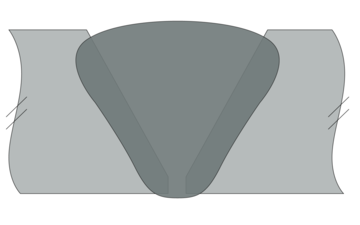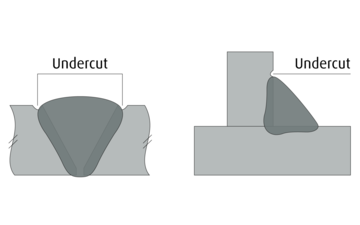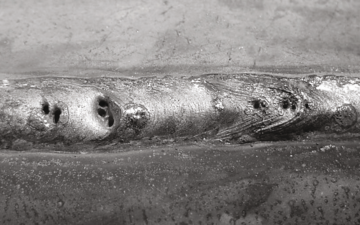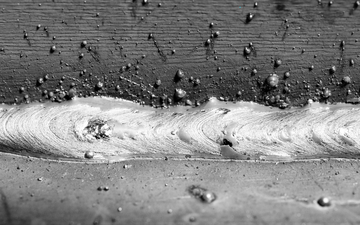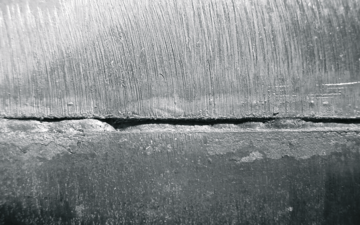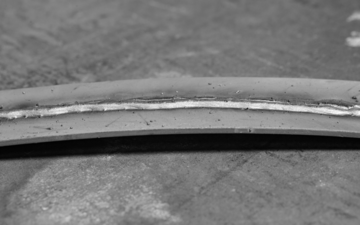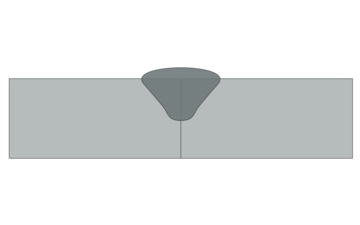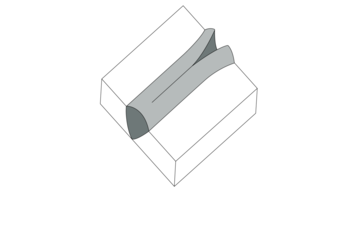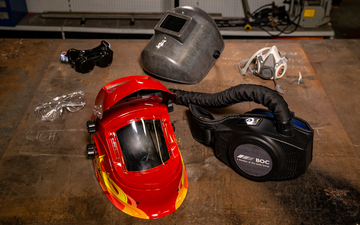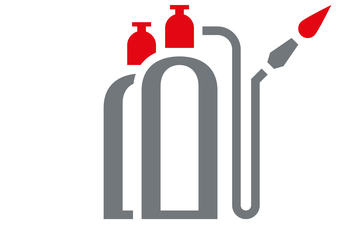- Official BOC UK Online | Industrial Gases | Products & Solutions | BOConline UK
-
Shop
- Industries
- Processes
- Gases & Equipment
-
Solutions
-
Services
-
Health & Safety
-
Contact & Support
- What's Happening
-
Net Zero Strategies
Overfill, Underfill & Undercut
Among the many things that can go wrong in welding, overfill is one of the most common defects that welders face in their work.
By the same token, underfill is just as problematic. Meanwhile, undercut can harm the base material to the point where it’s left in a weakened state and cracks can occur.
So, what’s the difference between these three types of frequently faced difficulties – and how can you prevent them from happening?
Key issues of overfill (excessive reinforcement)
Overfill, or ‘excessive reinforcement’, simply occurs when metal welded in place exceeds the amount that is really required for the job and the weld metal stands excessively proud of the parent material. It’s most frequently found in butt and fillet welds.
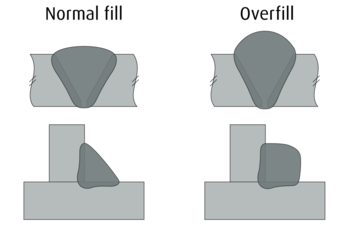
It’s often the result of poor welding parameters or operating technique – including poor manipulation of the welding torch, slow travel speed, excessively high amperage, or using the wrong consumable or shielding gas – and causes a range of problems:
-
Places the toes of the weld under stress
-
Makes subsequent filling runs in multipass welds harder
-
Higher likelihood and occurrence of slag entrapment
-
Leaves poor surface finish and appearance

How can overfill be avoided?
Because most of the mistakes behind overfill are avoidable, specific techniques can eliminate it from your welding process. That means optimising and controlling welding parameters and your technique:
-
Using the right current and smaller electrode diameter
-
Using higher welding speed
-
Better preparation including proper cleaning
-
Correct alignment of materials to be welded
-
Careful weld bead placement to ensure no overfill
-
Using a different weld torch angle

Overfill can be fixed by surface grinding smoothly at the base of the metal to remove overlays.
-
Maintaining an arc length that’s too long
-
Using the incorrect electrode angle
-
Selecting the wrong shielding gas
-
Welding too fast with excessively high current

How can underfill and undercut be avoided?
Underfill is mainly eliminated using:
-
Careful bead placement
-
Better operator technique
Undercut, meanwhile, is normally cut out by:
-
Reducing your arc length and current
-
Reducing the welding speed
-
Ensuring you have the correct electrode angle and size
-
Using an optimal weaving technique, allowing enough dwell time at edges

Undercut can be corrected by placing a stringer bead along the entire length of the defect. If necessary, you can blend it with a grinder to achieve the desired weld profile.
A question of precision
To avoid overfill, underfill and undercut defects it’s important to pay attention to detail – and to be as precise as possible in your work.
By following the correct welding procedures, you can put an end to these common problems and focus on getting the weld your effort deserves.
